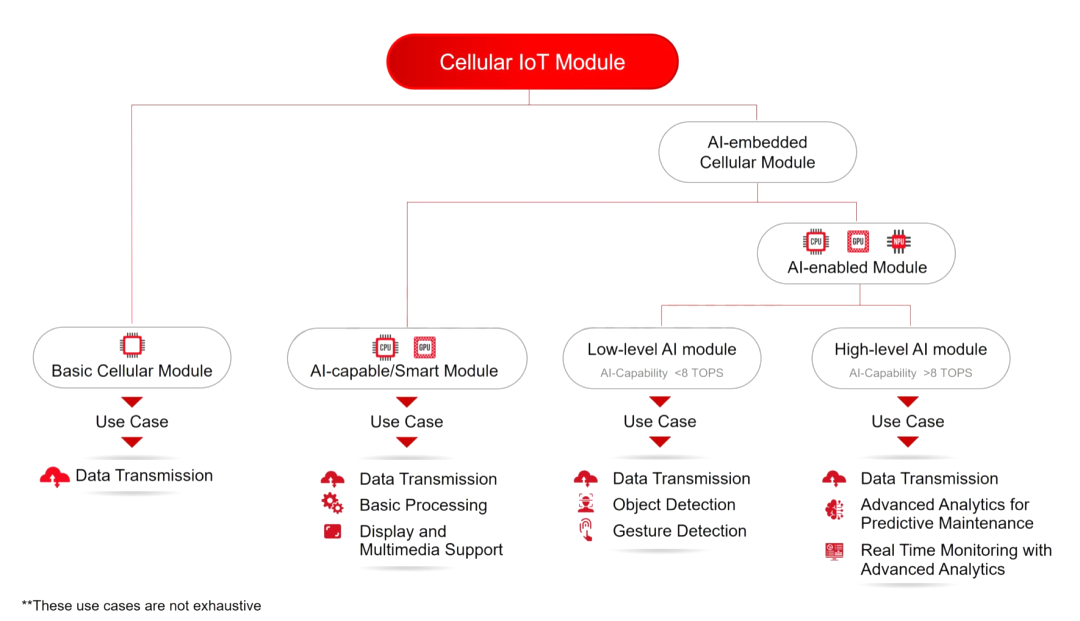Embedded AI cellular modules are expected to account for 25% of all IoT module shipments by 2030
According to Counterpoint's tracking and forecasting of AI modules, embedded AI cellular modules are expected to account for 25% of all cellular IoT module shipments by 2030, up from 6% in 2023, with a CAGR of 35%. Artificial intelligence has made great progress in recent years, especially in terms of privacy, reliability, low latency, cost-effectiveness, power efficiency, and personalization.
• Embedded AI cellular modules account for 6% of total cellular IoT module shipments in 2023, and will grow at a CAGR of 35% by 2030.
• Cellular modules have evolved from simple communication baseband components to AI SoCs that integrate CPU, GPU, and NPU, enhancing their functionality and performance.
• Users' focus on end-side analysis, real-time decision-making, and security has increased the demand for end-side AI.
• By 2030, drones, automotive, POS and retail, healthcare, and industry will drive the growth of AI modules.

Counterpoint further categorizes IoT modules based on hardware integration capabilities and use cases.
Basic cellular modules: These modules contain only a baseband or chipset, which mainly provides connectivity for IoT devices to send and receive data.
Smart modules: These modules have a CPU and GPU as well as a communication baseband, but the functionality is mainly focused on data transmission and basic data processing.
AI modules: These modules go a step further and integrate advanced processors such as CPU, GPU and neural processing unit (NPU) or tensor processing unit (TPU), or dedicated AI engines to enhance AI capabilities.
• AI modules can be further divided into two subcategories:Beginner AI cellular IoT modules: These modules provide moderate AI capabilities, typically performing AI inference at speeds below 8 TOPS.
• Advanced AI modules: These modules support AI inference above 8 TOPS and can handle more complex tasks.

Embedded AI cellular modules will be used in various industries, but only a few specific applications will particularly drive the adoption of this technology.
• In the automotive industry, the rise of digital cockpits will largely promote the popularity of embedded AI cellular modules. AI virtual assistants enhance the driving experience by responding to voice commands, managing navigation, and controlling in-vehicle entertainment systems such as music and video.
• In retail terminals such as POS, screen displays and smart modules are gradually becoming popular. With the development of AI-related functions such as face detection and gesture recognition, both primary and advanced AI cellular modules are integrated into devices to help analyze customer behavior, manage inventory, and detect fraud.
• In the future, routers equipped with AI functions can serve as a central hub for managing smart home devices such as lights, thermostats, and security systems. However, the popularity of these AI routers will be limited.
In addition to these applications, we will also witness the popularity of embedded AI modules in drones, industrial handheld devices, robots, electronic signatures, signage, security cameras, etc. We expect embedded AI modules to be most widely adopted in drones and industrial handheld devices, although their volume will still be small. At the same time, the automotive and POS industries are expected to contribute the largest shipments of overall embedded AI cellular modules by 2030.
